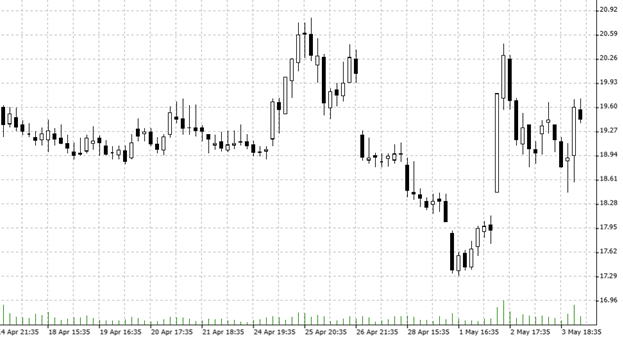

04.05.2023 – No sooner did the banking crisis seem to be over, than there are new worries. Or was the recent setback on Wall Street due to today’s decision by the Federal Reserve? In fact, one has to do with the other.
As expected, the Federal Reserve has once again raised interest rates slightly. And hinted at a pause in tightening, but at the same time ruled out interest rate cuts. Furthermore, Fed Chairman Jerome Powell tried to ignore as best he could in front of the press the raging elephant that is currently trampling the china store: the crisis of small and medium-sized banks.
First, the facts: The Fed Funds Rate is up 0.25 percentage points and is now in a range of 5.0 to 5.25 percent. The rate hike was the tenth in a row. Quite a rapid pace: In March 2022, the key interest rate had still been in a range of 0.0 to 0.25 percent.
Possible pause of the hawks
Powell signaled a “hawkish pause.” According to press reports, the monetary guardians deleted a passage from their text according to which some additional monetary policy tightening might be appropriate. Instead, wording was chosen that leaves a door open for further tightening, but does not signal it. Powell emphasized that inflation is well above the 2 percent target and that lowering inflation will take time. Further decisions would depend on incoming data.
The market now sees the moderate possibility of another rate hike in June, commented financial blog ZeroHedge. At the same time, according to the yield curve, there is a 94 percent possibility of a recession.

Source: Bernstein Bank GmbH
Powell initially managed to contain the nervousness after the sell-off of regional banks from the beginning of the week. The stock market marked its high yesterday right after Powell’s speech before prices crumbled. Pictured here is the hourly chart of the VIX fear indicator. In what caused fresh worry lines, Powell acknowledged that the Senior Loan Officer Opinion Survey (SLOOS) confirmed that banks are tightening their lending standards – and that lending is slowing. Incidentally, the survey is due for release on May 08.
Healthy and resilient
Speaking to the press, Powell had called the banking system “sound and resilient.” Not everyone sees it that way: “ZeroHedge” commented sarcastically: “Small banks can’t stop deposit outflows at 4.75% Fed funds. But at 5.00% all those deposits will come rushing back.” As it looks, the Fed now has to devote more attention to the big problem it has created itself with years of cheap money: The possible collapse of many companies with questionable business models, propped up and kept alive by banks that could loosely distribute loans.
New Short Attack
Shortly after Powell’s press conference, the next short attack was launched on American regional banks. They are groaning under the rapidly rising interest rates and have many customers in their portfolios who are feeling a decline in business and might no longer be able to service the lending rates. Interestingly, once again, it was primarily institutions from the western United States that came into the focus of the short-sellers – i.e., those that are likely to be primarily invested in the Internet, tech and crypto bubble, and especially in the formerly golden California. For example, the shares of PacWest were beaten down by a staggering 60 percent in the meantime. Western Allliance lost another third.
Our conclusion: The clean-up in the regional banking sector is likely to continue. As long as this crisis remains contained and no systemically important bank topples over, the stock market will be little disturbed. However, if it is not just a healthy market shakeout, the overall market could soon be affected again. We are curious to see what will happen next – Bernstein Bank wishes successful trades and investments!
______________________________________________________________________________________________________________
The content of this publication is for general information purposes only. In this context, it is neither an individual investment recommendation or advice nor an offer to purchase or sell securities or other financial products. The content in question and all the information contained therein do not in any way replace individual investor- or investment-oriented advice. No reliable forecast or indication for the future is possible with respect to any presentation or information on the present or past performance of the relevant underlying assets. All information and data presented in this publication are based on reliable sources. However, Bernstein Bank does not guarantee that the information and data contained in this publication is up-to-date, correct and complete. Securities traded on the financial markets are subject to price fluctuations. A contract for difference (CFD) is also a financial instrument with leverage effect. Against this backdrop, CFD trading involves a high risk up to the point of total loss and may not be suitable for all investors. Therefore, make sure that you have fully understood all the correlating risks. If necessary, ask for independent advice. CFDs are complex instruments and are associated with the high risk of losing money quickly because of the leverage effect. 68% of retail investor accounts lose money trading CFD with this provider. You should consider whether you understand how CFD work and whether you can afford to take the high risk of losing your money.7
